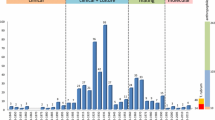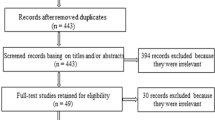Abstract
Malassezia pachydermatis is part of the normal cutaneous microbiota of wild and domestic carnivores. However, under certain conditions this yeast can overproliferate and cause several diseases in its host, mainly otitis and dermatitis in dogs. The aim of this study was to conduct a molecular characterization of M. pachydermatis isolates from healthy and diseased domestic animals, in order to assess the molecular diversity and phylogenetic relationship within this species. The large subunit (LSU) and the internal transcribed spacer (ITS) of ribosomal RNA, chitin synthase 2 (CHS2) and β-tubulin genes from sixteen strains isolated from dogs, cats, a goat, a pig and a horse were sequenced. A different number of types of sequences were identified for each target gene, including some types described for the first time. Five sequence types were characterized for the LSU, eleven for the ITS region, nine for CHS2 and eight for β-tubulin. A multilocus analysis was performed including the four genes, and the resulting phylogenetic tree revealed fifteen genotypes. Genotypes were distributed in two well-supported clades. One clade comprised strains isolated from different domestic animals and a strongly supported cluster constituted by strains isolated from cats. The second clade included strains isolated mainly from dogs and an outlier strain isolated from a horse. No apparent association could be observed between the health status of the animal hosts and concrete strains. The multilocus phylogenetic analysis is a useful tool to assess the intraspecific variation within this species and could help understand the ecology, epidemiology and speciation process of M. pachydermatis.


Similar content being viewed by others
References
Cabañes FJ. Malassezia yeasts: how many species infect humans and animals? PLoS Pathog. 2014;10:e1003892. doi:10.1371/journal.ppat.1003892.
Triana S, González A, Ohm RA, et al. Draft genome sequence of the animal and human pathogen Malassezia pachydermatis strain CBS 1879. Genome Announc. 2015;3:e01197-15. doi:10.1128/genomeA.01197-15.
Wu G, Zhao H, Li C, et al. Genus-wide comparative genomics of Malassezia delineates its phylogeny, physiology, and niche adaptation on human skin. PLoS Genet. 2015;11:e1005614. doi:10.1371/journal.pgen.1005614.
Bond R, Guillot J, Cabañes FJ. Malassezia yeast in animal disease. In: Boekhout T, Guého-Kellermann E, Mayser P, Velegraki A, editors. Malassezia and the Skin. Berlin: Springer; 2010. p. 271–99.
Velegraki A, Cafarchia C, Gaitanis D, Iatta R, Boekhout T. Malassezia infections in humans and animals: pathophysiology, detection, and treatment. PLoS Pathog. 2015;11:e1004523. doi:10.1371/journal.ppat.1004523.
Anthony RM, Howell SA, Lloyd DH, Pinter L. Application of DNA typing methods to the study of the epidemiology of Malassezia pachydermatis. Microb Ecol Healthy Dis. 1994;7:161–8.
van Belkum A, Boekhout T, Bosboom R. Monitoring spread of Malassezia infection in a neonatal intensive care unit by PCR mediated genetic typing. J Clin Microbiol. 1994;32:2528–32.
Aizawa T, Kano R, Nakamura Y, Watanabe S, Hasegawa A. Molecular heterogeneity in clinical isolates of Malassezia pachydermatis from dogs. Vet Microbiol. 1999;70:67–75.
Aizawa T, Kano R, Nakamura Y, Watanabe S, Hasegawa A. The genetic diversity of clinical isolates of Malassezia pachydermatis from dogs and cats. Med Mycol. 2001;39:329–34.
Chryssanthou E, Broberger U, Petrini B. Malassezia pachydermatis fungaemia in neonatal intensive care unit. Acta Pediatr. 2001;90:323–7.
Castellá G, Hernández JJ, Cabañes FJ. Genetic typing of Malassezia pachydermatis from different domestic animals. Vet Microbiol. 2005;108:291–6.
Hossain H, Landgraf V, Weiss R, et al. Genetic and biochemical characterization of Malassezia pachydermatis with particular attention to pigment-producing subgroups. Med Mycol. 2007;45:41–9.
Guillot J, Guého E, Chévrier G, Chermette R. Epidemiological analysis of Malassezia pachydermatis isolates by partial sequencing of the large subunit ribosomal RNA. Res Vet Sci. 1997;62:22–5.
Makimura K, Tamura Y, Kudo M, Uchida K, Saito H, Yamaguchi H. Species identification and strain typing of Malassezia species stock strains and clinical isolates based on the DNA sequences of nuclear ribosomal internal transcribed spacer 1 regions. J Med Microbiol. 2000;49:29–35.
Sugita T, Takeo K, Hama K, et al. DNA sequence diversity of intergenic spacer I region in the non-lipid-dependent species Malassezia pachydermatis isolated from animals. Med Mycol. 2005;43:21–6.
Cafarchia C, Gasser RB, Latrofa MS, Parisi A, Campbell BE, Otranto D. Genetic variants of Malassezia pachydermatis from canine skin: body distribution and phospholipase activity. FEMS Yeast Res. 2008;8:451–9.
Machado MLS, Cafarchia C, Otranto D, et al. Genetic variability and phopholipase production of Malassezia pachydermatis isolated from dogs with diverse grades of skin lesions. Med Mycol. 2010;48:889–92.
Kobayashi T, Kano R, Nagata M, Hasegawa A, Kamata H. Genotyping of Malassezia pachydermatis isolates from canine healthy skin and atopic dermatitis by internal spacer 1 (IGS1) region analysis. Vet Dermatol. 2011;22:401–5.
Han SE, Chung TH, Nam EH, Park SE, Hwang CY. Molecular analysis of Malassezia pachydermatis isolated from canine skin and ear in Korea. Med Mycol. 2013;51:396–404.
Crespo MJ, Abarca ML, Cabañes FJ. Evaluation of different preservation and storage methods for Malassezia spp. J Clin Microbiol. 2000;38:3872–5.
Castellá G, Coutinho SD, Cabañes FJ. Phylogenetic relationships of Malassezia species based on multilocus sequence analysis. Med Mycol. 2014;52:99–105.
Larkin MA, Blackshields G, Brown NP, et al. Clustal W and Clustal X version 2.0. Bioinformatics. 2007;23:2947–8.
Castresana J. Selection of conserved blocks from multiple alignments for their use in phylogenetic analysis. Mol Biol Evol. 2000;17:540–52.
Tamura K, Stecher G, Peterson D, Filipski A, Kumar S. MEGA6: molecular evolutionary genetics analysis version 6.0. Mol Biol Evol. 2013;30:2725–9.
Stamatakis A. RAxML version 8: a tool for phylogenetic analysis and post-analysis of large phylogenies. Bioinformatics. 2014;30:1312–3.
Ronquist F, Teslenko M, Van Der Mark P, et al. MrBayes 3.2: efficient Bayesian phylogenetic inference and model choice across a large model space. Syst Biol. 2012;61:539–42.
Cafarchia C, Latrofa MS, Parisi A, et al. Molecular characterization of Malassezia isolates from dogs using three distinct genetic markers in nuclear DNA. Mol Cell Probes. 2007;21:229–38.
Acknowledgments
The authors thank Carolina Gómez from the Veterinary Mycology Group of Universitat Autònoma de Barcelona (UAB) for valuable technical assistance. Financial support came from Servei Veterinari de Bacteriologia i Micologia from the UAB.
Author information
Authors and Affiliations
Corresponding author
Ethics declarations
Conflict of interest
The authors report no conflicts of interest. The authors alone are responsible for the content and writing of the paper.
Electronic supplementary material
Below is the link to the electronic supplementary material.
Rights and permissions
About this article
Cite this article
Puig, L., Castellá, G. & Cabañes, F.J. Cryptic Diversity of Malassezia pachydermatis from Healthy and Diseased Domestic Animals. Mycopathologia 181, 681–688 (2016). https://doi.org/10.1007/s11046-016-0026-3
Received:
Accepted:
Published:
Issue Date:
DOI: https://doi.org/10.1007/s11046-016-0026-3




